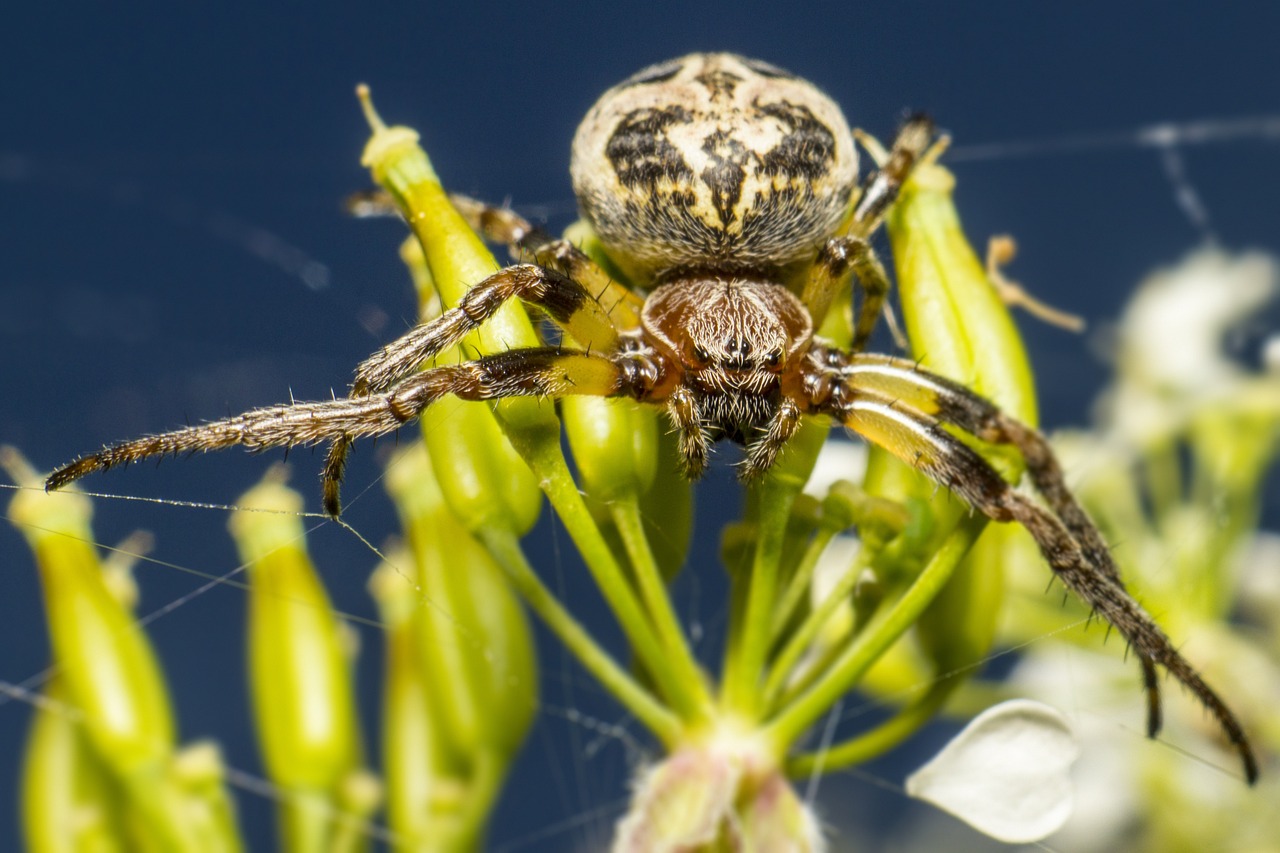The Furrow Orbweaver (Larinioides cornutus) is a common species of orb-weaving spider found in various regions across the Northern Hemisphere, including Europe and North America. These spiders are known for their intricate webs and are often found near water bodies or in vegetation around human dwellings.
Key Characteristics:
- Appearance:
- Size: Females are larger than males, with body lengths ranging from 6 to 14 mm. Males are usually around 5 to 9 mm.
- Color: Their bodies have a mottled pattern of brown, gray, and black. They often have a light-colored stripe running down the center of their abdomen, bordered by darker, more irregular markings.
- Shape: The abdomen is somewhat rounded, with a distinct “furrowed” pattern, giving the species its name.
- Web Structure:
- Like most orb-weaving spiders, Larinioides cornutus builds a classic circular web, usually in sheltered areas such as under bridges, in bushes, or on buildings.
- The webs are used to catch flying insects, which the spider will quickly immobilize with its venom.
- Behavior:
- Nocturnal: The Furrow Orbweaver is primarily active at night, spending the day hiding in a retreat, often near the edge of its web.
- Hunting: It relies on its web to capture prey, which includes small insects like flies and moths.
- During the night, it sits in the center of the web, waiting for vibrations signaling trapped prey.
- Habitat:
- The Furrow Orbweaver is adaptable and can be found in various environments, including wetlands, gardens, meadows, and urban settings.
- It prefers areas near water, such as marshes, lakes, and streams, but can also be found on the exterior of buildings and under eaves.
- Reproduction:
- After mating, females lay eggs in silk sacs and guard them until they hatch. The spiderlings disperse after hatching, using a technique known as “ballooning,” where they release silk threads to catch the wind and travel to new locations.
- Role in the Ecosystem:
- Larinioides cornutus is an important predator of small insects, contributing to natural pest control in its environment.
- Its webs, although temporary, are rebuilt regularly and play a significant role in maintaining ecological balance by capturing flying insects.
Conclusion:
The Furrow Orbweaver is a fascinating species known for its intricate web designs and effective hunting methods. Though not dangerous to humans, it plays a critical role in controlling insect populations in a wide range of habitats, from wetlands to urban areas.
Visited 815 times, 3 visit(s) today
Views: 1349
Subscribe to the newsletter:
